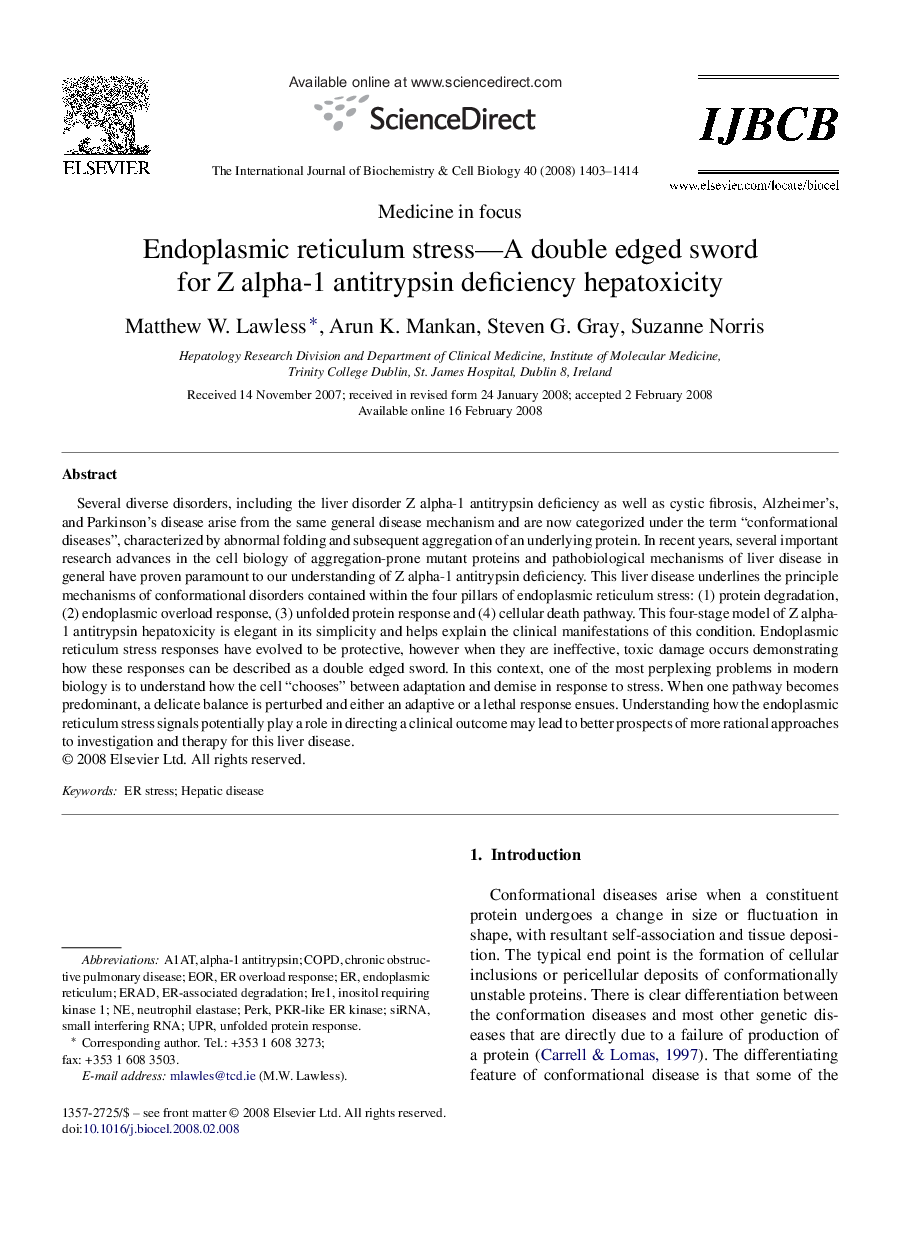| Article ID | Journal | Published Year | Pages | File Type |
|---|---|---|---|---|
| 1984859 | The International Journal of Biochemistry & Cell Biology | 2008 | 12 Pages |
Several diverse disorders, including the liver disorder Z alpha-1 antitrypsin deficiency as well as cystic fibrosis, Alzheimer's, and Parkinson's disease arise from the same general disease mechanism and are now categorized under the term “conformational diseases”, characterized by abnormal folding and subsequent aggregation of an underlying protein. In recent years, several important research advances in the cell biology of aggregation-prone mutant proteins and pathobiological mechanisms of liver disease in general have proven paramount to our understanding of Z alpha-1 antitrypsin deficiency. This liver disease underlines the principle mechanisms of conformational disorders contained within the four pillars of endoplasmic reticulum stress: (1) protein degradation, (2) endoplasmic overload response, (3) unfolded protein response and (4) cellular death pathway. This four-stage model of Z alpha-1 antitrypsin hepatoxicity is elegant in its simplicity and helps explain the clinical manifestations of this condition. Endoplasmic reticulum stress responses have evolved to be protective, however when they are ineffective, toxic damage occurs demonstrating how these responses can be described as a double edged sword. In this context, one of the most perplexing problems in modern biology is to understand how the cell “chooses” between adaptation and demise in response to stress. When one pathway becomes predominant, a delicate balance is perturbed and either an adaptive or a lethal response ensues. Understanding how the endoplasmic reticulum stress signals potentially play a role in directing a clinical outcome may lead to better prospects of more rational approaches to investigation and therapy for this liver disease.
